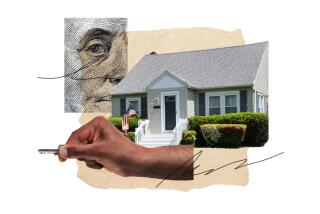On Unsure Footing in a Racist Era
- Share via
In his family history “Slaves in the Family,” white South Carolinian Edward Ball looked back to explore what most white Southerners of well-born families still prefer to ignore--that their ancestors owned black slaves. Not only owned, but exploited, beat and raped them.
Now in “The Sweet Hell Inside,” Ball turns to his cousins, the pale-colored descendants of his own white ancestors and their female slaves. He was introduced to this side of his family by Edwina Harleston Whitlock, an 84-year-old widow who came to his Charleston home with the word that they were related. It turned out that the relationship was distant; they were, in kinship parlance, sixth cousins twice removed.
But in Whitlock’s extensive family archives and lively memory Ball found an authentic, moving and important story, the tale of a pale-skinned Negro elite who after the Civil War raised themselves into prominence and relative wealth that continued into the Great Depression.
The Southern whites who had regained control after the end of Reconstruction were tightening the noose of Jim Crow laws around all blacks. By 1910 Jim Crow was firmly in place. The great majority of Southern blacks, who were dirt poor and not given education by the state, were consigned to sharecropping and the most menial labor.
The Negro elite, mostly businessmen and their families, had many advantages the poor did not: comfortable houses, vacations to the northern beaches in New Jersey, Long Island and Martha’s Vineyard, even trips to Europe; handsome clothes, big houses--but they were still held fast in the iron vise of America’s consciousness of race. They were never quite sure who they were, never certain that the ground on which they walked was stable.
Ball’s guide to this in-between world was the great-granddaughter of a white man, William Harleston, and one of his slaves, Kate Wilson. Harleston never married; the two had eight children. After he died, the white relatives pushed most of the children into black life and destitution. But one son, Edwin, pushed his way up into the eventually prosperous embalming business.
One of Edwin’s children was Teddy, a trained artist who at his peak did a portrait of Pierre S. DuPont , but then fell from favor when he could not make the transition from academic painting to Modernism.
Another, Ball writes, “was a gay undertaker and hypochondriac who believed he was always on the verge of death.” Yet another, Ball says, “was a classically trained black composer who haunted the nightclubs of 1920s Paris.”
Another one of Edwin’s children, Ella, was seduced by and married the owner of one of Charleston’s odder institutions, a black orphanage that made street musicians of its boys and sent them throughout the Northeast and even to Europe to make money to support the orphanage. And to make its proprietor, the Rev. Daniel Jenkins, a rich man. The rest of the Harleston family turned against Ella after she had a baby out of wedlock, but she stayed with her husband--called the Parson--and she helped make the Jenkins Orphanage a going concern. Some of its musicians later achieved some fame as jazz musicians. One of them was Jabbo Smith, who played the haunting muted trumpet in a 1920s recording with Duke Ellington’s band of the Duke’s “Black and Tan Fantasy.”
But in 1933 there was a fire in the orphanage, and Charleston, which had never done anything for black orphans, charged the Jenkinses with neglect, and the orphanage closed.
There is much sadness in the stories Ball tells. The closed society in which his characters lived was very small. He says that in Charleston in 1920 probably as few as 50 black families lived as well as the Harlestons did. They and all the less fortunate blacks were hemmed in mercilessly by whites. Their story is part of the life of America that is only now beginning candidly to be told. We have yet much more to learn.
More to Read
Sign up for Essential California
The most important California stories and recommendations in your inbox every morning.
You may occasionally receive promotional content from the Los Angeles Times.













